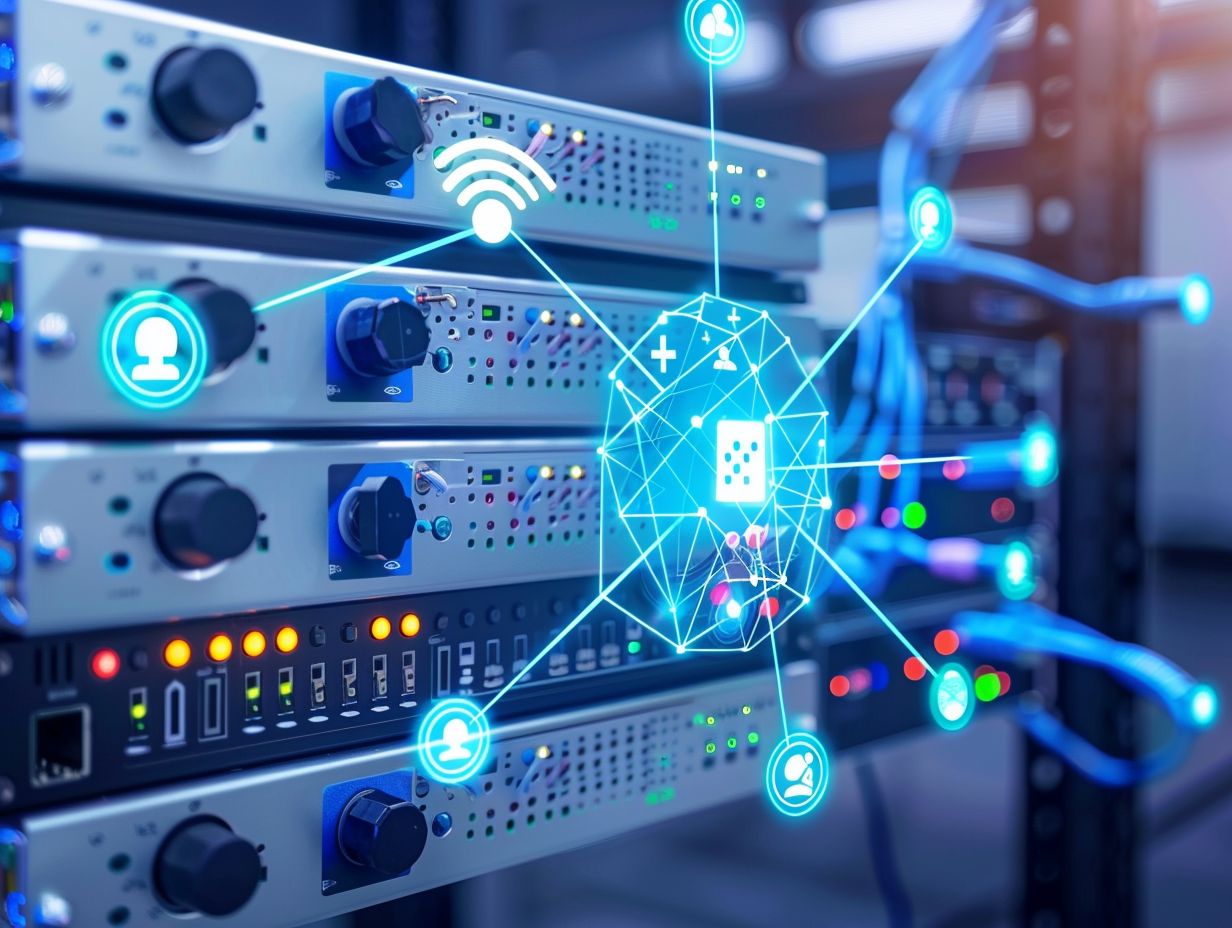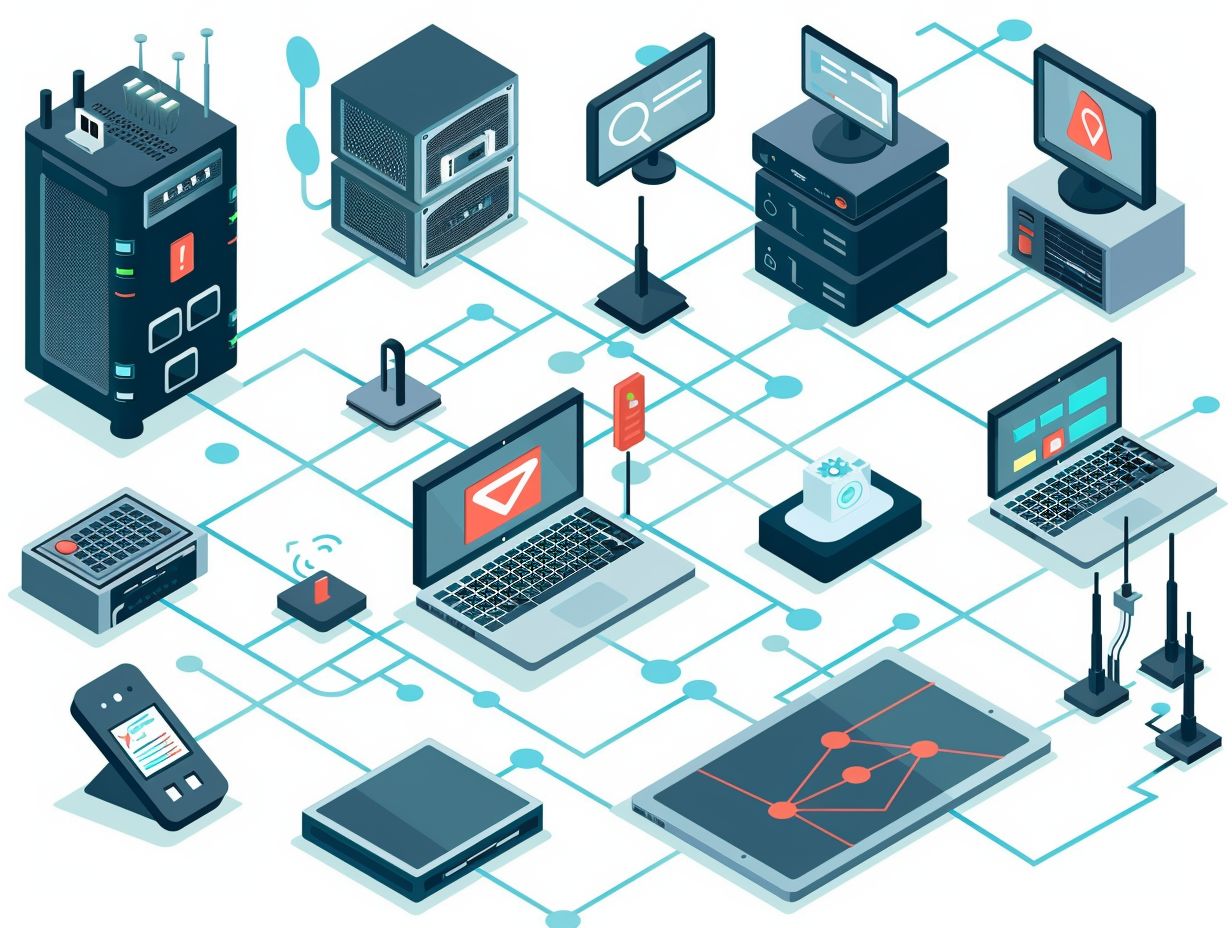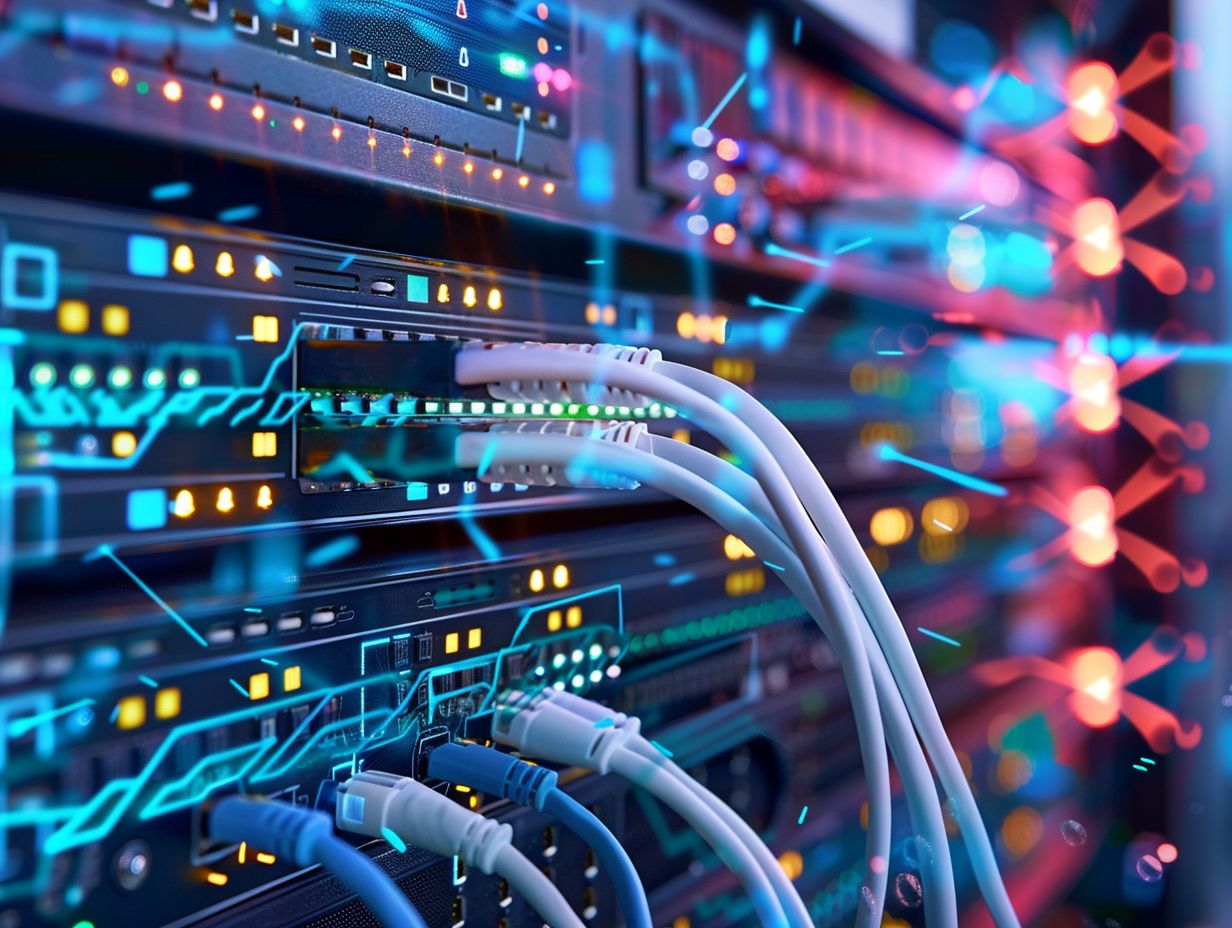In today’s interconnected world, data center network performance is crucial for ensuring smooth operations and seamless communication. This article will delve into the key metrics, common challenges, and strategies for optimizing data center network performance.
Factors that can significantly impact network efficiency, such as identifying and addressing bottlenecks, selecting the appropriate hardware and configuration, will be explored. Discover effective monitoring tools and techniques, as well as tips for regular maintenance and updates to keep your data center network running at its best.
Key Takeaways:

Understanding Data Center Network Performance
Understanding data center network performance is essential for ensuring the seamless operation of your IT equipment and maximizing efficiency. This process includes assessing aspects like power usage, cooling systems, server consolidation, network infrastructure, and incorporating technologies such as software-defined networking, virtualization, and monitoring.
Key Metrics and Factors
In determining the performance of a data center network, key metrics and factors play a critical role. Metrics such as power consumption, cooling efficiency, IT equipment utilization, and monitoring tools like PUE are vital for optimizing network operations.
Monitoring power consumption in data center operations is essential for both cost efficiency and sustainability. By closely tracking energy usage, data centers can identify areas for improvement and implement strategies to reduce waste. The cooling systems within a data center are crucial as they help maintain optimal operating temperatures, preventing equipment overheating. Efficient IT equipment utilization ensures that resources are utilized effectively, maximizing performance without unnecessary strain. Companies utilize metrics like PUE to assess overall data center efficiency, considering how much energy is utilized for actual computing versus overhead tasks.
Common Challenges in Data Center Network Performance
Common challenges in data center network performance often stem from suboptimal optimization, inefficiencies in server consolidation, inadequacies in network infrastructure, and gaps in monitoring practices. It is crucial to address these challenges in order to guarantee smooth operations and improved efficiency.
Identifying and Addressing Bottlenecks

You must prioritize the identification and resolution of bottlenecks to enhance data center network performance. This process entails conducting a thorough analysis of hardware selection, contemplating potential upgrades, and implementing robust monitoring strategies to pinpoint and rectify areas of congestion or inefficiency.
By conducting a meticulous assessment of the network infrastructure, you can identify possible bottlenecks, such as outdated switches or overloaded servers. Upgrading hardware components, such as routers and switches, can help alleviate congestion and enhance data flow. Utilizing proactive monitoring tools enables the tracking of network traffic patterns and the expedited detection of abnormalities that could signify a bottleneck. By integrating these methods, data center administrators can establish a more robust and efficient network environment.
Strategies for Optimizing Data Center Network Performance
Utilizing effective strategies is crucial for optimizing data center network performance. These strategies encompass meticulous network design, configuration adjustments, hardware selection and upgrades, and the utilization of automation and orchestration tools to enhance efficiency.
Network Design and Configuration
Regarding optimizing data center network performance, it’s crucial to focus on network design and configuration. You need to implement robust hardware selection, upgrades, software-defined networking solutions, and virtualization technologies to enhance efficiency and streamline operations.
The criteria for hardware selection are essential to ensure that your data center network can meet the demands of modern applications and data traffic. Upgrades must be strategically planned to accommodate evolving technologies and increasing data loads.
Software-defined networking (SDN) provides programmable network capabilities that enable dynamic provisioning and efficient resource utilization. Virtualization further enhances flexibility by separating software from hardware, allowing for improved scalability and resource allocation.
Hardware Selection and Upgrades
For maintaining optimal data center network performance, it is crucial to select appropriate hardware and upgrade it in a timely manner. By investing in efficient hardware, upgrading legacy systems, and integrating advanced monitoring capabilities, organizations can ensure smooth operations and improved efficiency.
Upgrading hardware components, such as switches, routers, and servers, can have a significant impact on the overall network infrastructure by accelerating data transmission and reducing latency issues. Efficient hardware choices, including high-performance processors and ample memory capacity, are essential for managing increasing data loads and enhancing system reliability.
Regular hardware upgrades not only enhance performance but also address security vulnerabilities and ensure compatibility with the latest software updates. Employing effective monitoring tools, such as network monitoring software and predictive analytics, is crucial for identifying potential bottlenecks and optimizing resource allocation to achieve maximum efficiency.
Monitoring and Maintaining Data Center Network Performance

Monitoring and maintaining data center network performance is essential for sustaining optimal operations. By utilizing effective monitoring tools, implementing regular maintenance procedures, and ensuring timely updates, organizations can enhance energy efficiency, promote sustainability, and accurately forecast demand.
Effective Monitoring Tools and Techniques
Utilizing effective monitoring tools and techniques is crucial for maintaining optimal data center network performance. You need to leverage real-time monitoring solutions and predictive analytics to proactively manage PUE, optimize cloud computing resources, automate processes, and accurately forecast demand.
Real-time monitoring tools are essential for providing instant insights into network performance, allowing you to quickly identify and resolve issues before they impact operations. By using predictive analytics, you can anticipate potential bottlenecks or failures, enabling you to take preventive actions. Automation helps streamline maintenance tasks, reducing human error and enhancing overall efficiency. This integrated approach not only improves the reliability and uptime of the data center but also leads to significant cost savings in the long run.
Regular Maintenance and Updates
Regular maintenance and timely updates are essential practices for ensuring the longevity and efficiency of your data center network performance. By conducting routine inspections, applying software patches, optimizing your network infrastructure, and automating recurring tasks, your organization can mitigate risks, improve efficiency, and accurately forecast demand.
Through regular inspections, you can proactively identify and resolve potential issues, minimizing the risk of network disruptions. Software updates play a critical role in patching vulnerabilities and enhancing security measures to safeguard sensitive data. Optimizing your network infrastructure ensures smooth data transmission and scalability as your business grows. Introducing automation not only streamlines maintenance tasks but also reduces human error, thereby enhancing overall network reliability and performance.
Frequently Asked Questions
What is data center network performance optimization?

Data center network performance optimization refers to the ongoing process of improving the efficiency and functionality of a data center network by implementing various techniques and strategies.
Why is optimizing data center network performance important?
Optimizing data center network performance is important because it allows for faster and more reliable data transfer, which is crucial for businesses to operate efficiently and effectively.
What are some common methods for optimizing data center network performance?
Some common methods for optimizing data center network performance include load balancing, traffic shaping, and network segmentation.
How does load balancing help optimize data center network performance?
Load balancing distributes network traffic evenly across multiple servers, preventing any single server from becoming overloaded and reducing overall network latency.
What is the role of network segmentation in optimizing data center network performance?
Network segmentation involves dividing a larger network into smaller subnetworks, allowing for improved traffic management and increased security, both of which contribute to optimized network performance.
Are there any potential drawbacks to optimizing data center network performance?
Yes, there can be potential drawbacks to optimizing data center network performance, such as increased costs for implementing advanced techniques, potential compatibility issues, and the need for ongoing maintenance and updates.
